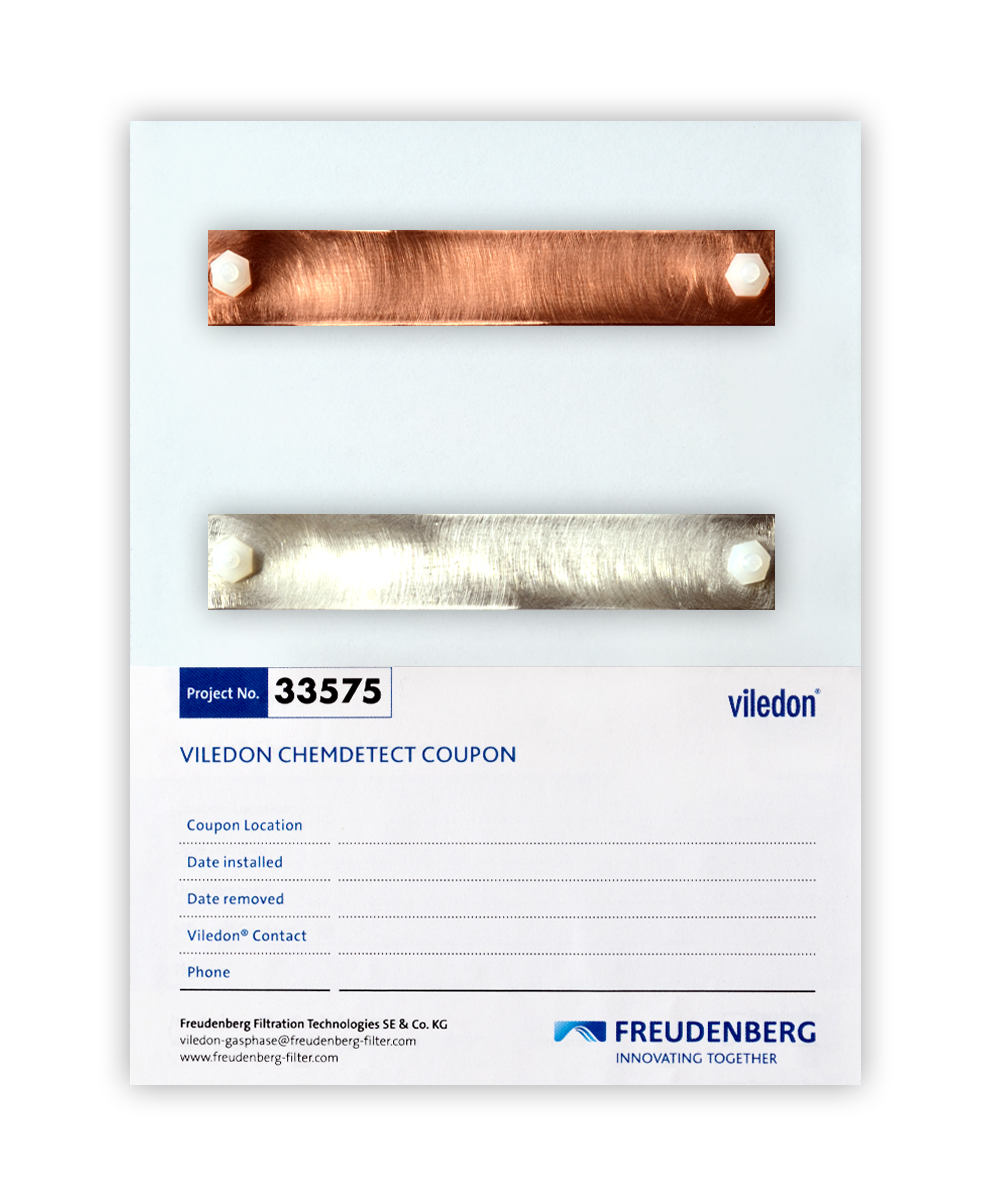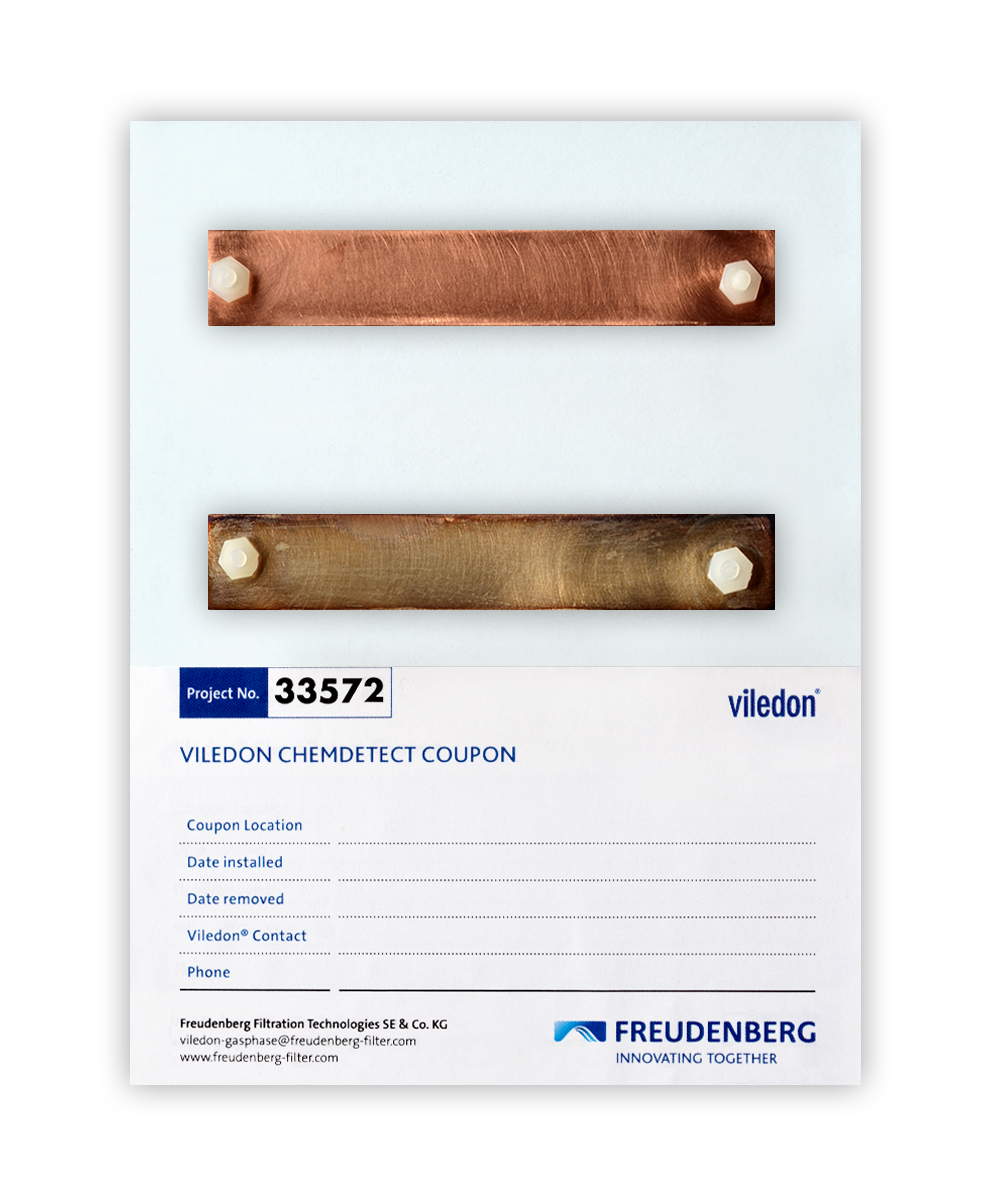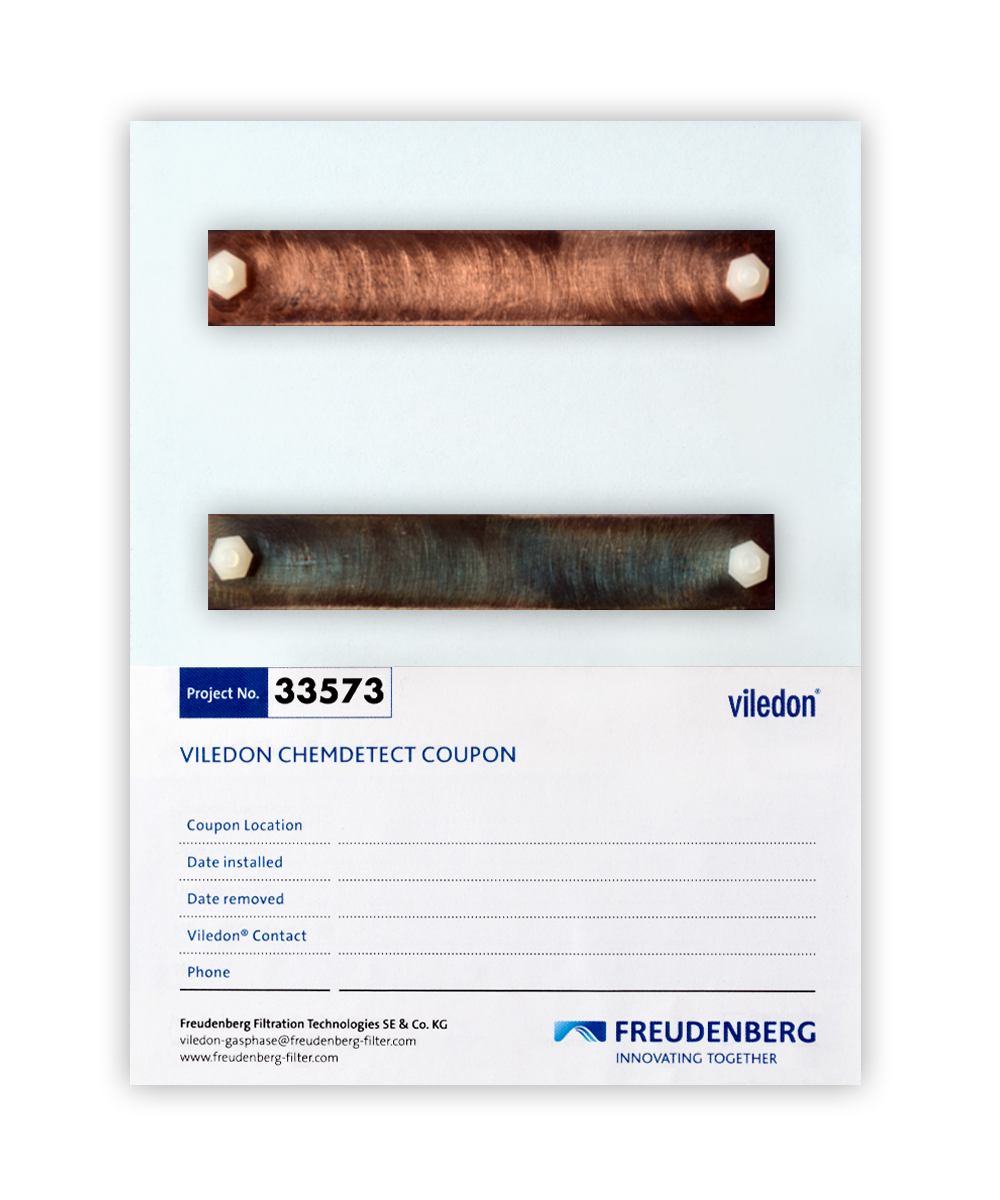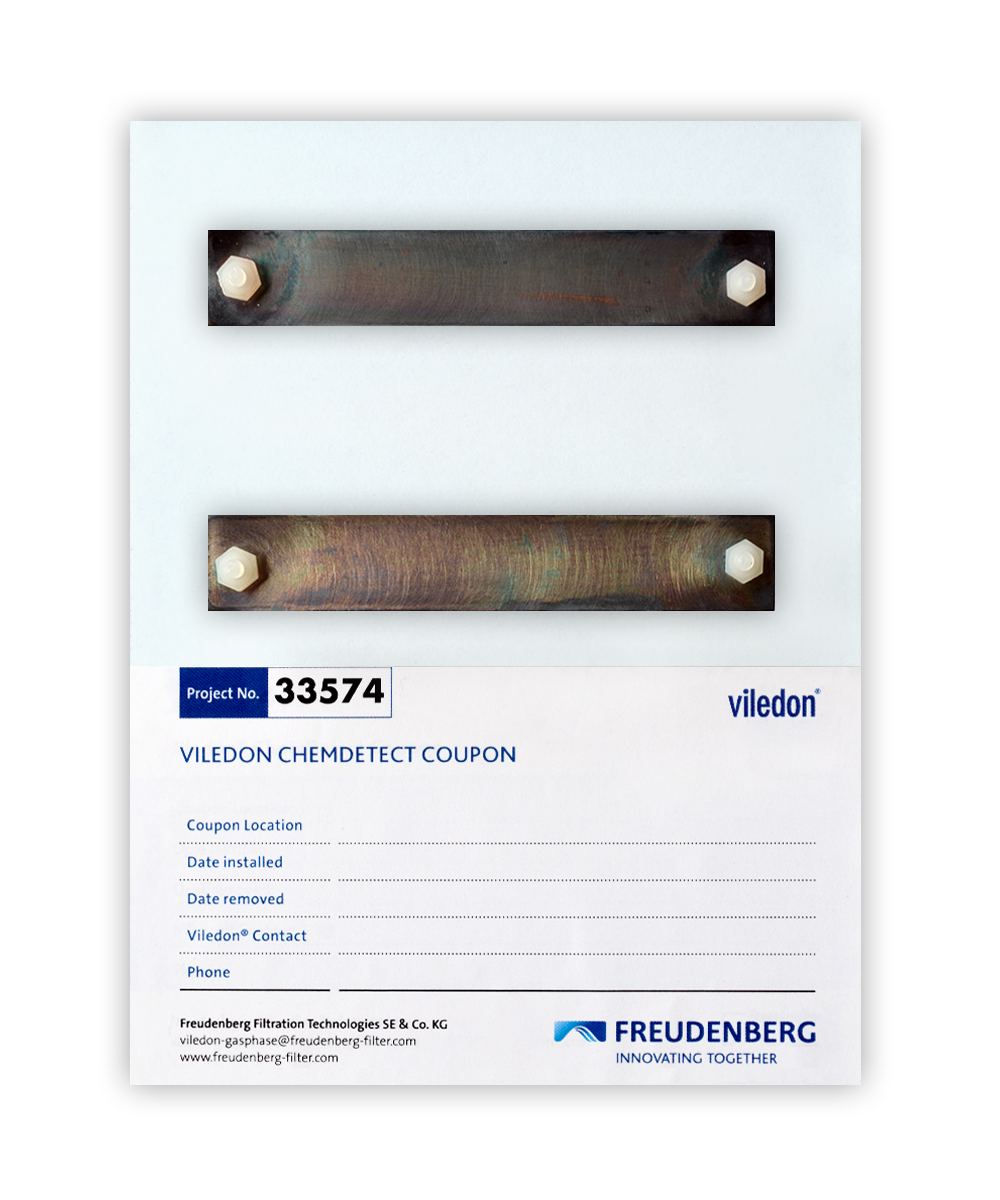More and more microchips and other electronic components are used in complex process controls. Although this is a blessing for plant efficiency and performance, it renders the plants more susceptible to airborne contaminant gases. If you see a copper pipe in the production hall lose its characteristic shine, gradually becoming darker or even acquiring a black coating, you should test the process air for contaminant gases.
Once in the air, they react with unprotected metal surfaces, leading to corrosion. The higher the level of contaminant gas concentration, the faster the reaction. High humidity and temperature levels accelerate the process. In short, it is not a matter for great concern if copper elements become discolored over several years. However, if a patina develops over a few weeks, short circuits and flashovers may threaten operational dependability.
It is not necessary to install comprehensive monitoring systems straight away in order to monitor the presence and levels of corrosive gases in the air. You can take advantage of the fact that metals such as copper and silver become discolored after contact with contaminant gases. It is possible to draw conclusions as to the corrosivity of the ambient air based on the intensity of the discoloration — in most cases after just 30 days.
The corrosion layer thickness on copper and silver coupons are analyzed based upon the ASTM Standard B 825 “Coulometric Reduction of Surface Films on Metallic Test Samples” to determine the level of corrosivity. The result is classified into Corrosion Class G1, G2, G3, or GX according to ANSI/ISA-71.04-2013 standard “Environmental Conditions for Process Measurement and Control Systems: Airborne Contaminants”. It also allows conclusions to be drawn as to the type and composition of the gas present. While classes G1 and G2 represent mild and moderate corrosion respectively, G3 represents harsh and GX severe corrosion from contaminant gases.
Viledon ChemDetect coupons by Freudenberg Filtration Technologies are a convenient solution to monitoring the corrosive potential of your process air. You can assess the risk on the basis of the results. They also provide a basis for customized filtration concepts — e.g., using special pellets for adsorbing contaminant gases.



